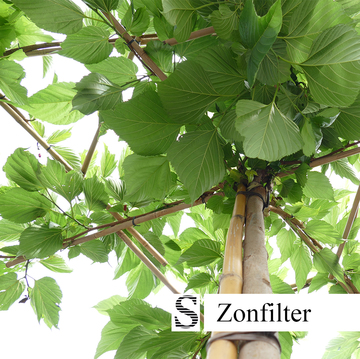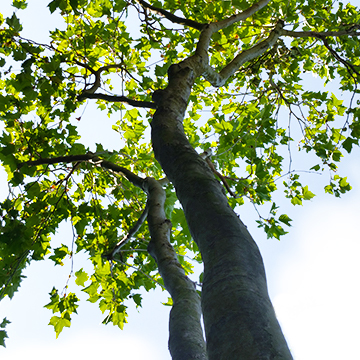Why choose a roof-trained plane tree?
- Reading time: 6 min.
- 6836x
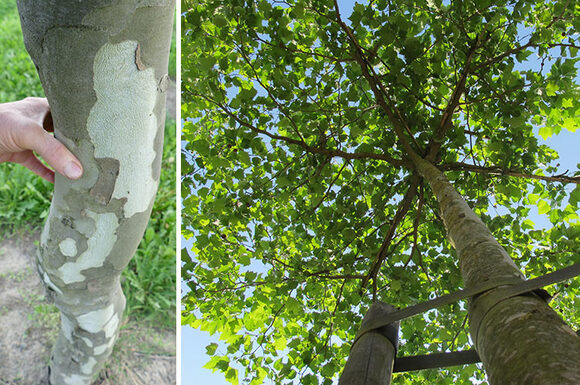
Thinking about buying a rooftop plane? Before making your choice, consider this question: do you specifically want a London plane or are you looking for another roof tree? After all, every garden is different, as are its inhabitants. The ideal scenario is that you work with a tree expert to find out which roof tree best suits your garden project. If you do want a rooftop plane, you can deliberately design the area for this tree. In this article, I discuss both the advantages and disadvantages of the London plane, so that you can make the right choice.
- Tom
- 2 October 2009
- (Last update: 21 July 2025)
In this article
Why buy a roof-trained plane tree? 7 advantages
1. The remarkable leaves of the plane tree
The roof plane tree is renowned for its beautiful, large leaves, a unique feature that makes it ideal as a natural sunshade. Experiments with other large-leaved trees made it clear that the roof plane truly stands out as a shade tree. Other species were either vulnerable to wind damage, not winter-hardy, or didn’t tolerate pruning well. The large leaves of the plane mean that only a few main branches are needed to form a lovely canopy. Extra perk: fewer branches means less pruning work.
2. Fresh, light leaf color
The plane tree’s foliage has a light tone that casts a fresh, airy shade. You’ll especially notice it when sitting beneath it. From a side view, the tree offers a mix of light and dark greens, giving it a neutral look that blends in well with the garden’s colors.
3. Pruning-tolerant
A shade tree must be able to handle pruning, and this is something the roof plane excels at. With correct pruning, it’s easy to maintain and remains highly decorative, even in winter. Its strength also lies in its load-bearing branches, which can span large distances. This is rare for trees with such large leaves. These strong branches stand up well to wind, too.
4. Character-rich trunk
Once you’ve seen the trunk of a plane tree, you’ll always recognize it. The bark displays a lively mix of grey, brown, and beige tones. It’s a stunning, characterful trunk that never loses its charm.
5. Relatively deep root system
Plane trees tolerate paving very well. When properly maintained as a shade tree, they pose no issues with roots. This is because they tend to grow deep-rooted systems.
6. Clean canopy
The roof plane has a light and airy canopy. It’s free of irritating pests. No caterpillars dropping into your plate while dining beneath it. The trunk also stays clean, rarely hosting moss. In urban areas, plane trees are planted for their air-purifying qualities and their role in fighting fine dust pollution.
7. Leaves decompose slowly or not at all
When the leaves fall, they don’t stick to the patio or dissolve into the lawn. Instead, they gently drift around until you collect them. The leaves also lack any substances that might stain natural stone. What’s more, plane trees tolerate moist soils well and aren’t toxic. During light rain, you can stay outside longer, as water doesn’t immediately seep through. And unlike regular parasols, there’s no need to fold the roof plane when it’s windy or rainy.
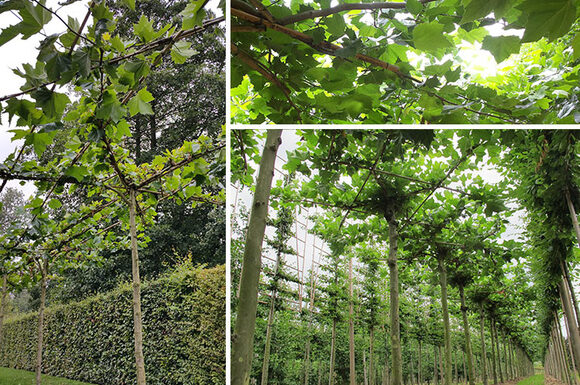
Disadvantages of the roof-trained plane tree
Are there downsides to the roof-trained plane tree? Yes, a few. But whether they outweigh the many advantages above—that’s for you to decide.
1. Sneezing during pruning
Cutting an onion makes your eyes water. Pruning a plane tree makes you sneeze. That’s due to the fine hairs on the underside of the leaves. These hairs help the tree ward off unwanted organisms—including the pruner—from its crown. This explains why roof-trained plane trees don’t host insects that cause nuisance. The hairs don’t come off on their own, not even in a strong breeze. They only become irritating during pruning. So it’s not like pollen that triggers allergies.
2. Fast growth = more pruning
Roof-trained plane trees often grow too quickly due to overly rapid cultivation in nurseries. That means extra pruning and maintenance. If you act in time, the pruning itself isn’t more difficult than with any other tree. But you’ll need to prune more often when the tree continues to grow vigorously.
3. Weak spots
Many roof-trained plane trees are cultivated with metal supports that can grow into the structure. This creates weak spots that only appear later in the tree’s life. That’s not our cultivation method. We use natural materials to grow our plane trees, ensuring a durable result. Never buy a parasol tree that contains metal in its crown.
Is buying a roof-trained plane tree the right choice?
The roof-trained plane tree is one of the best options for asymmetrical shade. Its strong branches can stretch far and carry weight, making it a reliable shade tree. But is it the right choice for you personally? That’s not something we can decide from here. Feel free to visit our nursery to talk about your project.
To wrap up, here are a few expert tips:
Do some light thinning during summer to keep things under control. How to do that? > Pruning roof-trained plane trees: when and how? Prune after a heavy rainfall, once the plane tree’s dust has mostly been washed away. That helps reduce irritation. Buy roof-trained plane trees that have been cultivated slowly (the cultivation process matters more than the variety). A slow-growing tree with regular pruning settles into a slower rhythm. That makes it easier to maintain and gives it its beautiful, knotted appearance. Choose trees that were grown without metal supports.
Want to keep reading? Parasol trees follow a few general guidelines. You’ll find them in this article: Points to consider when choosing a parasol tree.
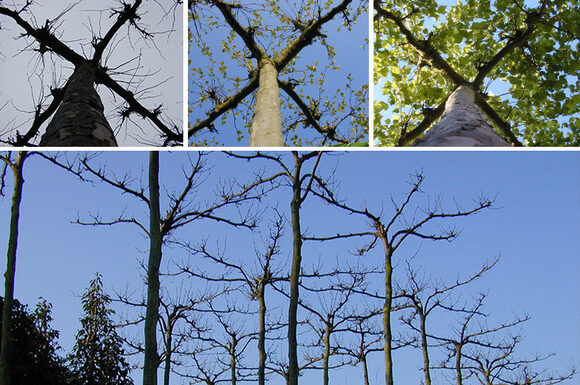
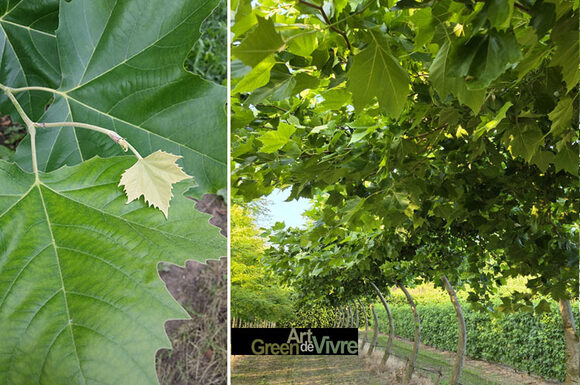
Want to learn more about roof-trained plane trees? Do you have something to add, or would you like tailored advice? You're welcome to visit us or collaborate. Book your appointment below.

Related articles

